Would you like to change what users see after submitting a form based on how they fill it out? With conditional logic, you can set up any number of unique confirmations to show your users different messages, or even direct them to different pages, based on the contents of the entry they submit.
In this tutorial, we’ll show you how to set up conditional form confirmations in WPForms.
Before we get started, you’ll need to make sure WPForms is installed and activated on your site. Then create a new form or edit an existing one.
For our example, we’ll use a contact form that includes a Dropdown field labeled “Reason for Contact.” Here, each user can let us know the main topic of their message so that we can show them a relevant confirmation.
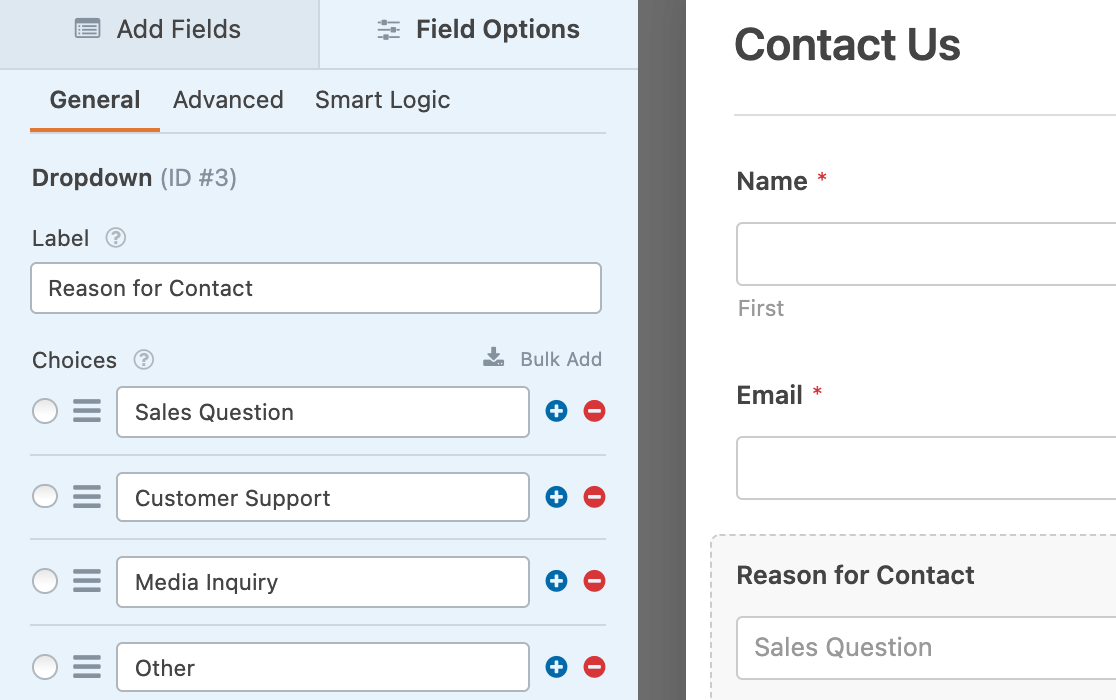
After you’ve added all the form fields you need, go to Settings » Confirmations.
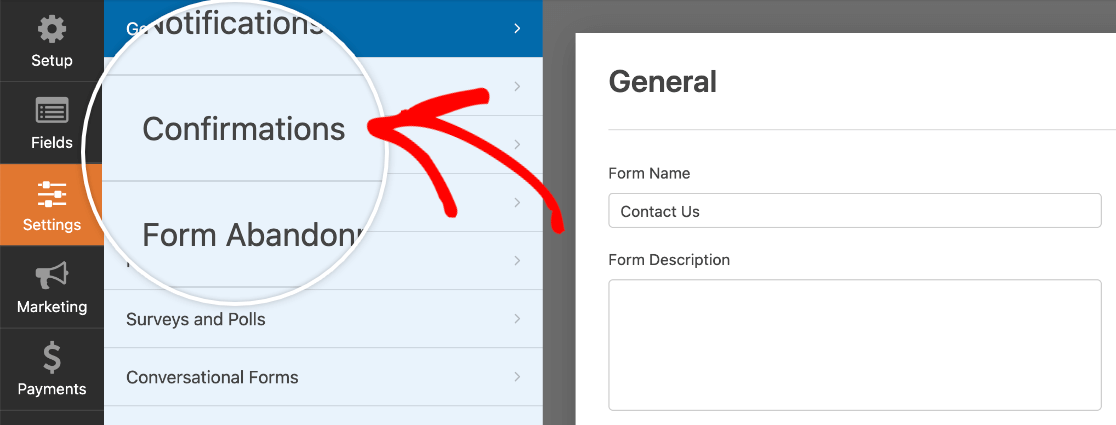
Here, select which kind of confirmation you’d like to use from the Confirmation Type dropdown. You can apply conditional logic to any confirmation type.
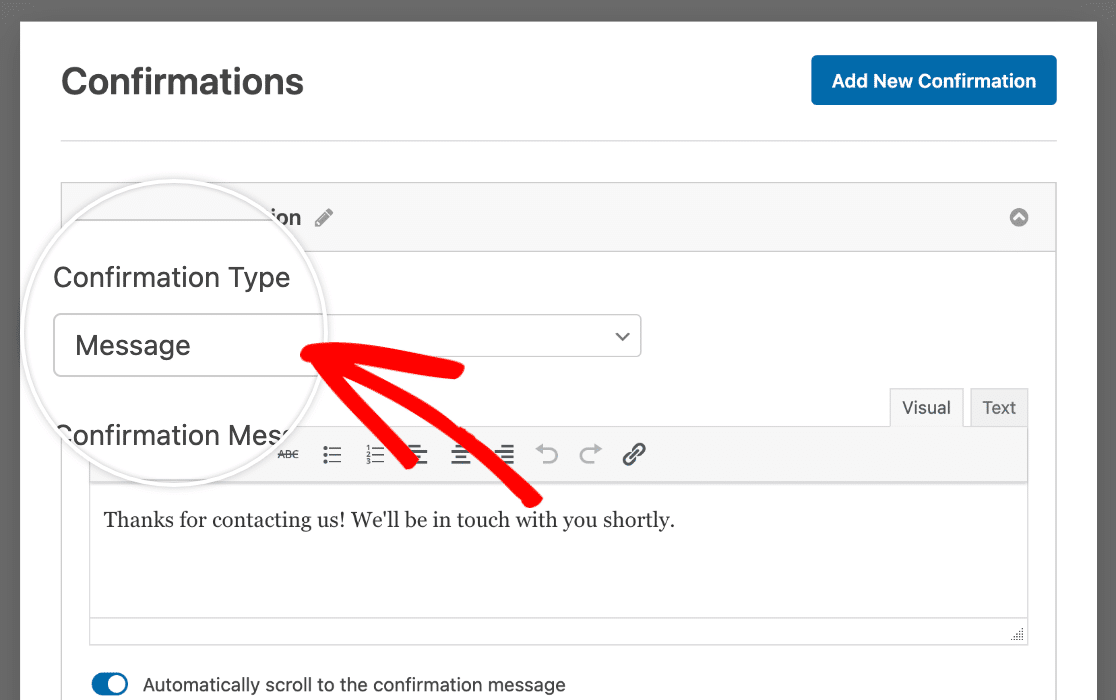
Note: If you’d like details on each confirmation type, please see our tutorial on setting up form confirmations.
For our example, we’ll use a Confirmation Message.
In order to see the conditional logic settings, you need to have at least two confirmations.
To add a new confirmation, click the Add New Confirmation button in the upper right corner.
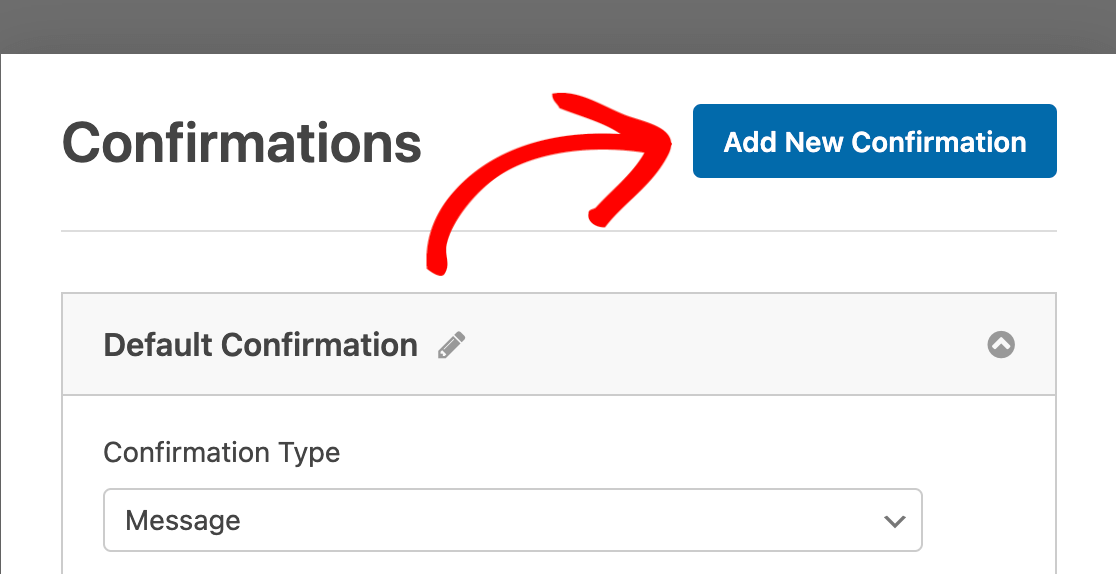
You will be prompted to name the new confirmation. This is for your internal use only, so you can name it anything that feels logical.
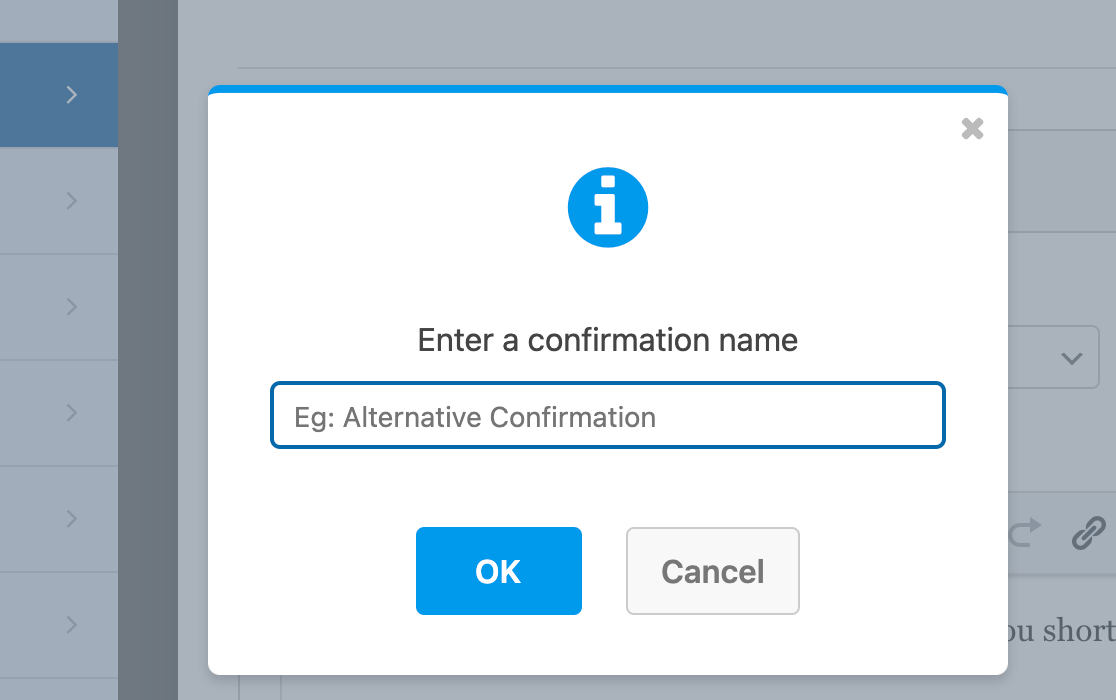
Then, enter your new conditional confirmation message in the space provided. After you’ve set up your confirmations as you’d like, toggle on the setting labeled Enable Conditional Logic.
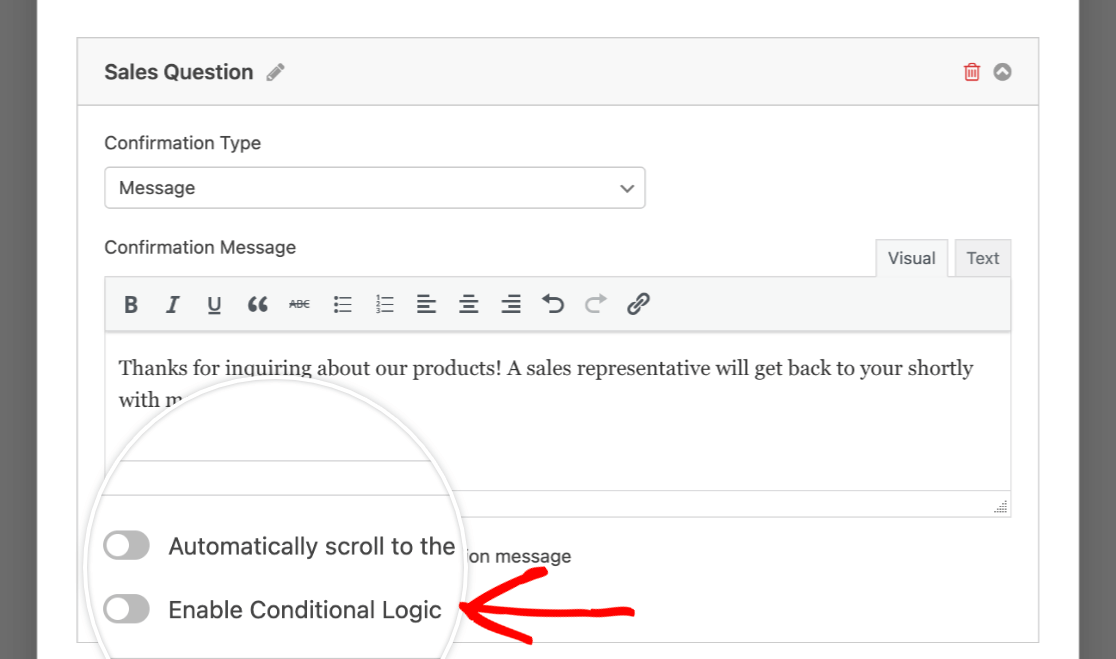
Next, you’ll need to set up your conditional rule. This will determine when this confirmation will be used.
Note: Would you like to learn more about conditional logic? Please see our conditional logic tutorial for additional details and examples.
For our example, we only want to use our first confirmation if the user chooses “Sales Question” as the reason for contact in their entry. To accomplish this, we’ll create a conditional logic rule that states, Use this confirmation if Reason for Contact is Sales Question.

Our first conditional confirmation is now all set!
Next, you can set up conditional logic for your second confirmation as well. Simply repeat this process for as many different confirmations as you’d like.
Note: Consider the conditional confirmations in WPForms like a to-do list. It starts from the top and moves down. The moment it finds a condition that is met, it stops going through the list and delivers that confirmation. So, when you have several confirmation conditions, their order matters. The first matched condition will trigger its associated confirmation, ignoring all the conditions below.
Don’t forget to save any changes you make to your form before exiting the builder.
Note: After setting up conditional logic, be sure to test out every condition by submitting entries to your form. For more recommendations on testing forms, please see our form pre-launch checklist.
That’s it! You can now set up conditional logic for confirmations in your forms.
Next, would you like to set up conditional notification emails, too? This is a great way to provide your users with an even more personalized experience or to contact relevant members of your team when users submit forms. Check out our tutorial on conditional form notifications for all the details.
